honeylocust (Gleditsia triacanthos)
Fabaceae, the bean family
How to recognize honeylocust. Honeylocust leaves are alternately arranged and pinnately compound with leaflets that are remarkably small–only 1-2 cm long. Some homeowners have planted honeylocust for this reason, as there are essentially no leaves to rake. The leaves are in some instances once-compound as in the example just below (or twice-compound as in the next example).
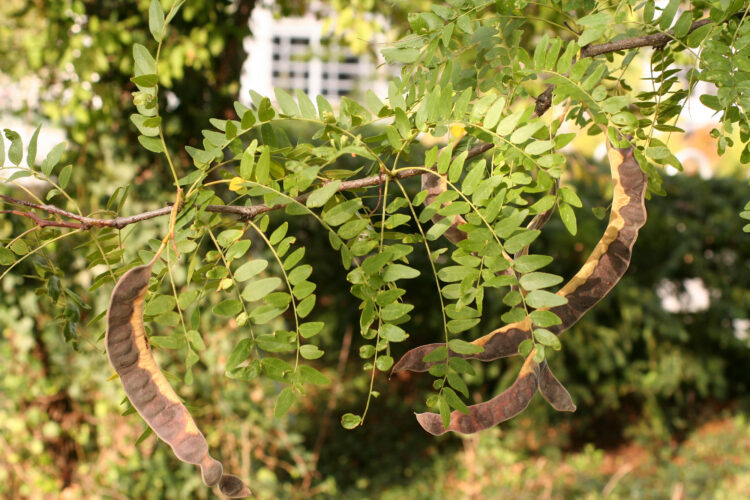
Honeylocust leaves are compound with small leaflets.
The leaves are often twice-compound, as in the example below.
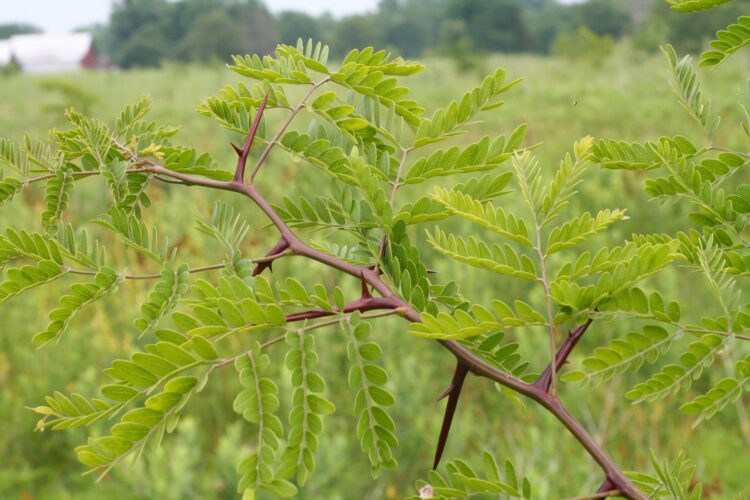
Honeylocust leaves are sometimes twice-compound.
Oh my god those thorns! Tree huggers beware!
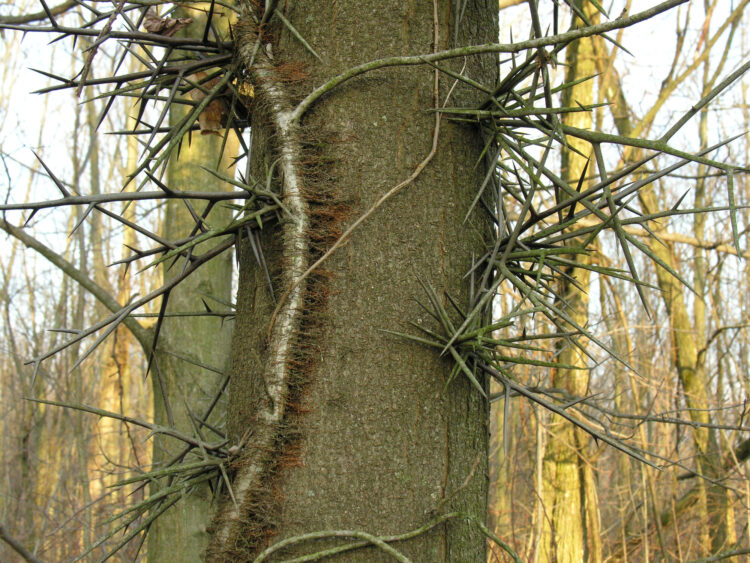
A honeylocust heavily armed with stout thorns and a poison-ivy vine!
Fruits. Honeylocust produces flat linear-oblong legumes that get to be about a foot long. Below, see a few on the ground during a recent mid-October.
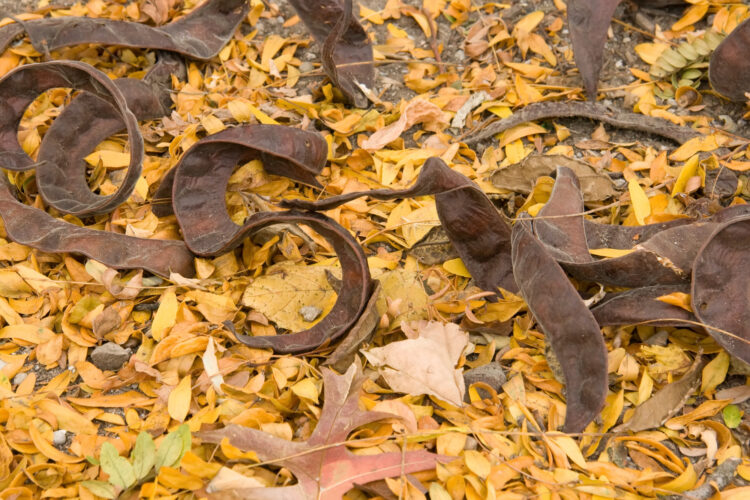
Honeylocust fruits are large strap-shaped legumes.
Where to find honeylocust. E. Lucy Braun, in The Woody Plants of Ohio (1961, 1989; The Ohio State University Press) tells us that that honeylocust is “A tree of interior range, reaching its greatest size in the Wabash bottoms of Indiana; the largest Ohio tree (in Trumballl Co.) measures 14 ft. 4 in. circumference 4 1/2 ft. above the ground (Ohio Forestry Ass’n.). Locally naturalized east of the Appalachians; widely distributed in Ohio but most abundant in the southwestern part of the state.”
Scanned Image from an Old Book
(Flora of West Virginia, by P.D. Strausbaugh and Earl L. Core)
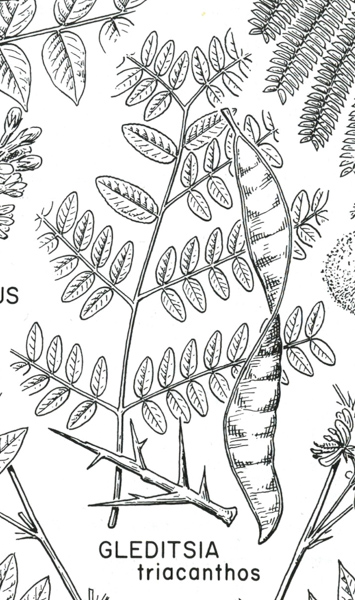
honeylocust
Ooo! I have a question!
The name honeylocust suggests there’s something sweet about Gleditsia. Is there?
Yes, there is a sweet edible pulp between the seeds.
